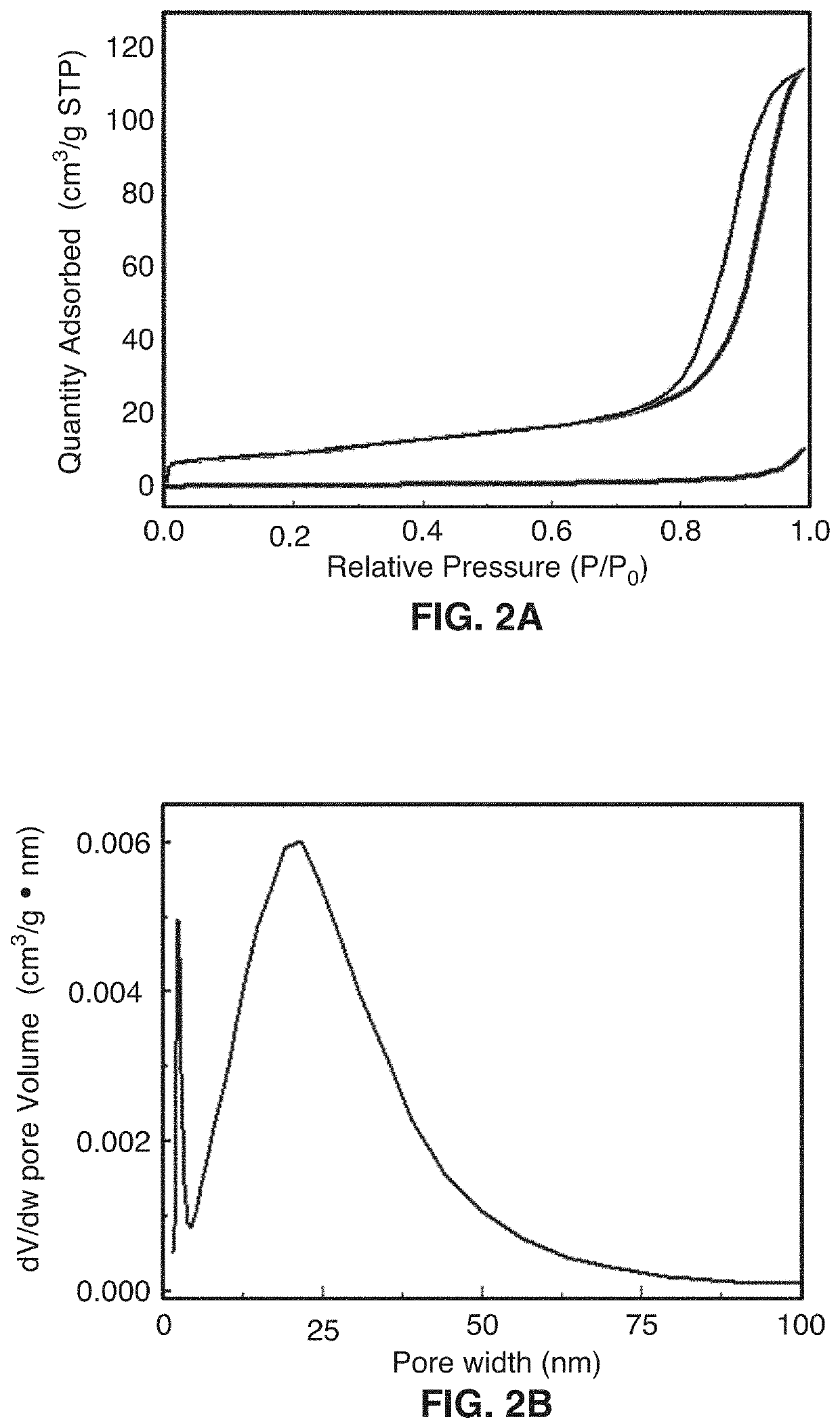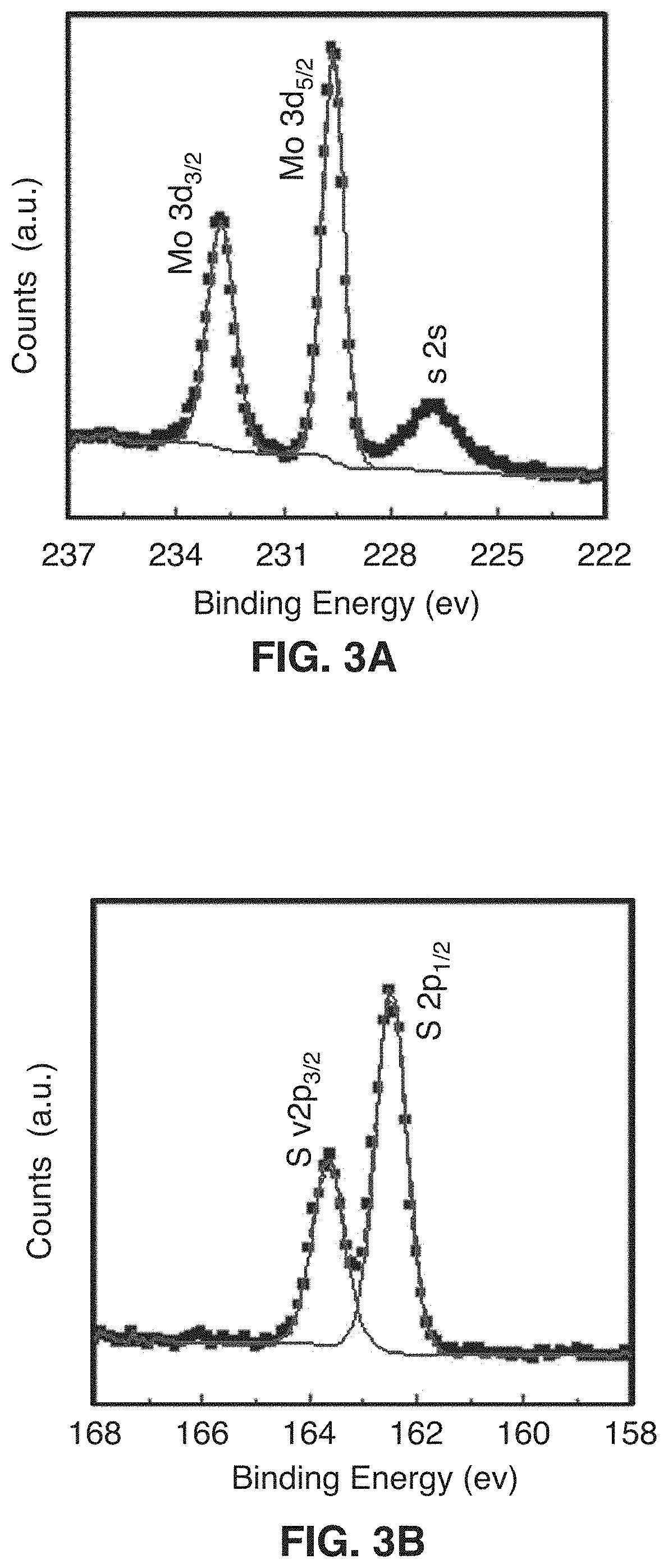Metal chalcogenides for pseudocapacitive applications
a technology of metal chalcogenides and pseudocapacitive devices, which is applied in the field of pseudocapacitive devices, can solve the problems of low power density and slow rate, low energy density of eldcs compared to batteries, and the desirable property of mossub>2 /sub>has not been fully utilized in li-ion battery applications, etc., and achieves high porousness, high electrical conductivity, and fast rate
- Summary
- Abstract
- Description
- Claims
- Application Information
AI Technical Summary
Benefits of technology
Problems solved by technology
Method used
Image
Examples
Embodiment Construction
[0072]1. General.
[0073]This disclosure describes the synthesis of highly defected nanocrystals with expanded atomic spacing and their use in high rate energy applications. For purposes of this disclosure, the term “nano” means less than about 100 nm. The term “highly defected” as used in this disclosure means that the layer spacing is larger than the spacing in perfect crystals. In addition, highly defected crystals according to this disclosure preferably have “frayed ends” which provide access to the interlayer crystals of the same material (e.g., access to the edges of the layer). In other words, some layers just stop and the edges have pores which give rise to the frayed ends. Increased surface area at least in part leads to a pseudocapacitive charge storage mechanism.
[0074]In one embodiment, the technology comprises synthetic metal dichalcogenides having a highly defected nanocrystalline layered structure, wherein layer spacing is larger than in perfect crystals of the same mate...
PUM
| Property | Measurement | Unit |
|---|---|---|
| voltage | aaaaa | aaaaa |
| particle size | aaaaa | aaaaa |
| charge storage | aaaaa | aaaaa |
Abstract
Description
Claims
Application Information
 Login to View More
Login to View More - R&D
- Intellectual Property
- Life Sciences
- Materials
- Tech Scout
- Unparalleled Data Quality
- Higher Quality Content
- 60% Fewer Hallucinations
Browse by: Latest US Patents, China's latest patents, Technical Efficacy Thesaurus, Application Domain, Technology Topic, Popular Technical Reports.
© 2025 PatSnap. All rights reserved.Legal|Privacy policy|Modern Slavery Act Transparency Statement|Sitemap|About US| Contact US: help@patsnap.com



